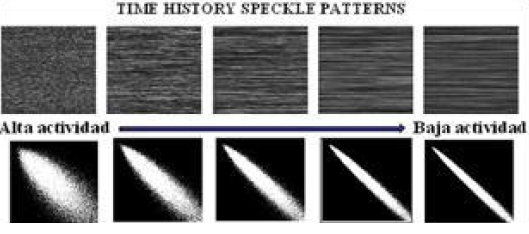Biospeckle Technique for Studying the Dependence of Lupinus Seeds Viability with Temperature
Abstract
The dynamic speckle or biospeckle technique is applied to determine the viability of Lupinus albus seeds produced in The Araucanía Region, Chile and to analyze the effect of the storage temperature in the viability of the same ones. The experimental setup used for the obtaining of the THSP (Time History of the Speckle Pattern) of every sample consists fundamentally of: an insulating thermal cabin provided with a circuit of establishment and control of the temperature; a 7 mW laser of He-Ne random, and a CCD AVT PIKE F-032B camera with frame grabber. The results obtained with different sets of 100 Lupinus albus seeds (in lots of 20) are presented, comparing the inertia moment (MI) of the THSP co-occurrence matrix values with the standard test using Tetrazolium (TZ) 0,5% solution, in the temperature range between 5 and 25 ºC. A good correlation between both methods is appreciated.

This work is licensed under the Creative Commons Attribution-NonCommercial 4.0 International (CC BY-NC 4.0) license.








